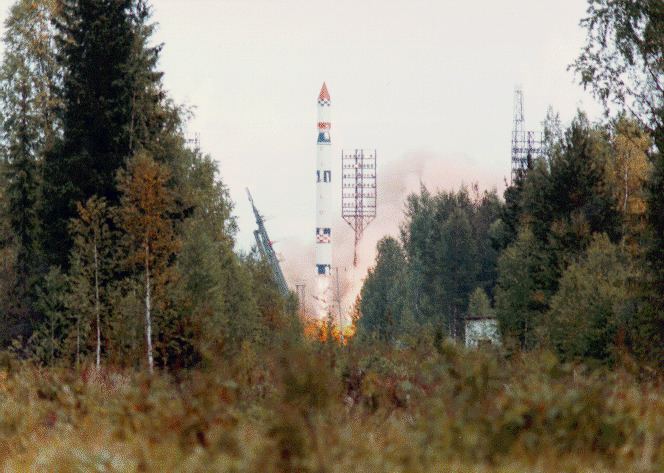Function Carrier rocket Diameter 3 m (9.8 ft) | Manufacturer Yuzhmash Height 39.27 m (128.83 ft) | |
 | ||
Mass 189,000 kg (416,000 lb) | ||
The Tsyklon-3, also known as Tsiklon-3, GRAU index 11K68, was a Soviet, and subsequently Ukrainian orbital carrier rocket. A derivative of the R-36 ICBM, and a member of the Tsyklon family, it made its maiden flight on 24 June 1977, and was retired on 30 January 2009. The Ukrainian-built Tsyklon rockets were retired in favour of future all-Russian carrier rockets, such as the Angara, and because they were fuelled by toxic hypergolic propellants.
Contents
Successor
Ukraine is developing a commercial derivative of the Tsyklon-3, the Tsyklon-4.
2013 loss of Ecuadorian satellite after impact with Tsyklon-3 space debris
On 23 May 2013 at approximately 05:38 UTC, the Ecuadorian satellite NEE-01 Pegaso passed very close to the spent upper stage of a 1985 Tsyklon-3 rocket over the Indian Ocean. While there was no direct collision between the satellite and upper stage, Pegaso is believed to have suffered a "glancing blow" after passing through a debris cloud around the Tsyklon stage and striking one of the small pieces. After the incident, the satellite was found to be "spinning wildly over two of its axes" and unable to communicate with its ground station. Efforts to reestablish control of Pegaso failed, and on 28 August 2013 the decision was made by EXA and the Ecuadorian government to declare the satellite as lost.
